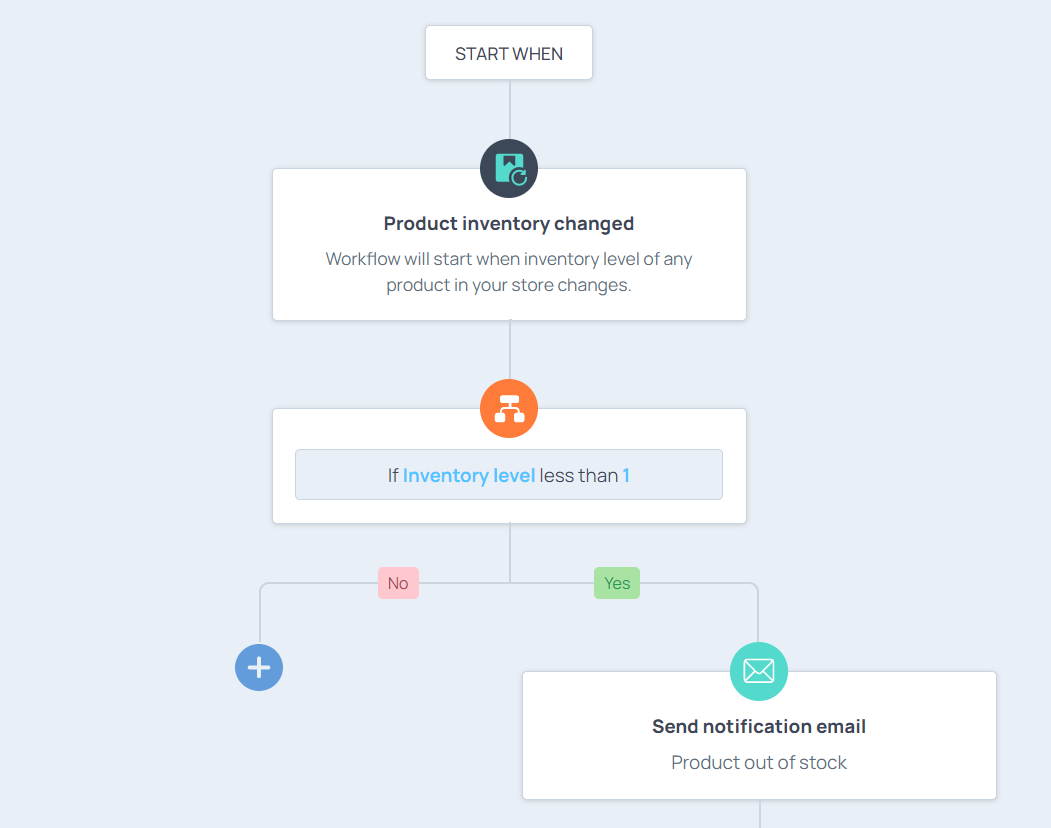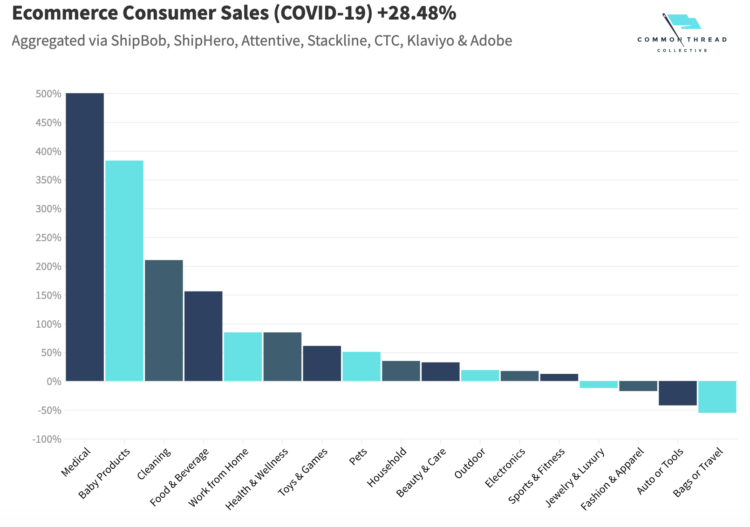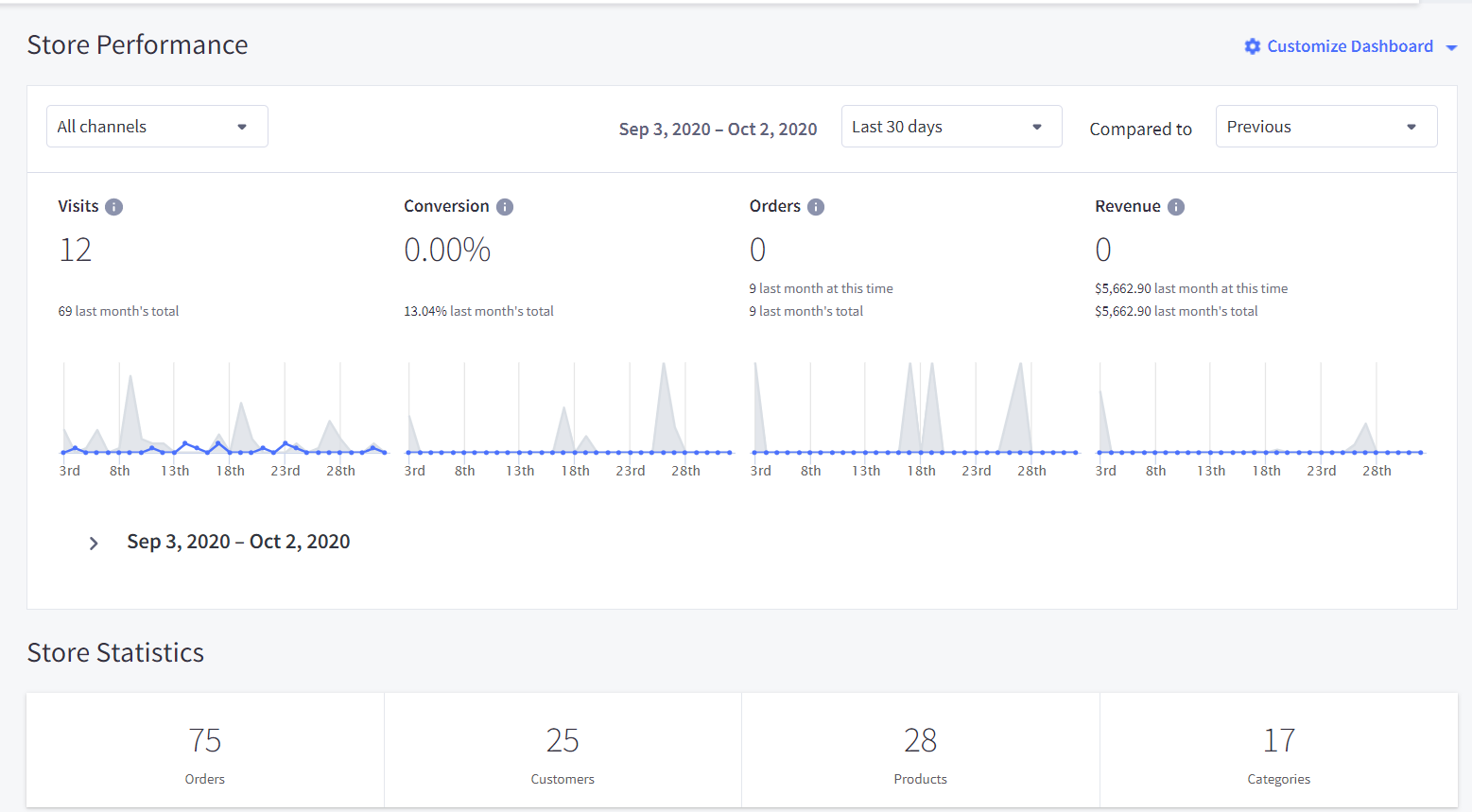There are no two ways about it – the 2020 holiday season sales will be an unprecedented challenge for retailers.
COVID-19 and the restrictions it brings mean this year’s holiday sales will present both difficulties and opportunities for online merchants. As shoppers prefer to shop from home, eCommerce is seeing a stratospheric rise in popularity. Projections for sales by online stores for Cyber Weekend 2020 are at $51.1 billion, nearly twice what they were in 2019.
At the same time, though, supply chains have seen massive disruption this year. Warehouses have been cutting down on staff and international suppliers are unable to carry on shipping operations as usual.
This blog will discuss the impact of a seamless supply chain for online merchants and suggest inventory management tips for the upcoming holiday season.
Supply chain & Inventory management for online merchants
In retail, the supply chain is the process from order inventory to product delivery. Supply chain management includes manufacturing, storage, fulfillment, and shipping. If any part of this process is weakened, your sales will be negatively affected.
Merchants selling products online need to plan ahead to face any issue that could come up this holiday shopping season.
These 7 actions can manage your supply chain and inventory this holiday season:
- Choose the best suppliers
- Plan your fulfillment process
- Talk to supply chain partners early
- Order the correct amount of inventory
- Price your products strategically
- Prepare for overstocking
- Prepare for selling out
1. Choose the best suppliers
Online merchants often work with international suppliers as a cost-saving measure. It might be better to work with domestic suppliers this year instead because that way you can:
- Avoid unexpected new tariffs
- Prevent cross-border shipping and customs delays
- Replenish stock quick and more easily
If in the end, you consider that working with international suppliers is the best option for your business, at least try diversifying for suppliers. It’s an uncertain time, so hedge your bets by ordering from suppliers in a number of different countries. Among inventory management tips, this will prevent you from losing all of your inventory due to Coronavirus outbreak.
2. Plan your fulfillment process
If you are a merchant with a very large volume of inventory, you might want to send it directly to a third-party logistics provider (3PL). Third-party partners handle shipping and fulfillment on your behalf, leaving you to focus on what you do best: online business strategy and marketing.
Whether you choose to work with a third-party fulfillment service or not, you should think very carefully when choosing warehouses. Use a warehouse that’s fairly close to your suppliers and start ordering inventory early. By planning ahead with plenty of time, you’ll give the warehouse staff enough margin to be able to organize and categorize your products correctly.
Merchants with brick-and-mortar stores that are largely unused should consider using the space as a personal warehouse. That way you can save money on external services and also have more control over your stock management. If you use your own space as a warehouse, you can also get a good visual idea of how quickly (or slowly!) your stock is selling. This helps you decide on which products to push as the holiday sales going on.
Another projected booming shopping trend this holiday season is curbside pickup and Buy Online, Pickup In-Store (BOPIS). 53% of holiday shoppers are planning to buy from stores with contactless options this year, while major chains like Target are already offering customers the chance to pick up their online purchases outside their physical storefronts. These clicks and collect options remove complications related to shipping and help to enhance the customer service you can offer.
If you do decide to implement store pickup this peak season (and you absolutely should), be sure to let your customers know how it works directly on your site’s checkout page. Ensure you practice social distancing, wear a facemask, and respect your customers’ personal space.
03. Talk to supply chain partners early
Your partners in the supply chain are your manufacturers and suppliers. You all have to work together and succeed together, so take the time to find a process and order volume that works for everyone involved.
COVID-19 has presented suppliers with their own problems, like factories being closed down, deliveries taking much longer and less staff available. Contact your suppliers as soon as possible to work out any possible issues in the supply chain. The earlier you start, the more you’ll be able to anticipate and head off any problems. So get started now!
When it comes to the order volume of your inventory, be as specific as you can and tell suppliers exactly how much you expect to have. If they flag up any potential problems with holiday supply, be sure to adjust your product range or diversity accordingly. And keep in touch with them regularly to be aware of any changes. Like all relationships, good and frequent communication is the key.
If you work with a 3PL company, check-in with them too. They could be up against a staff shortage or lack of drivers, warehouse closures or delivery restrictions. Go through a back-up plan with them to be ready for any fulfillment issues that come up.
Before you sell out of a certain stock item, you should have automatic reorder notifications. Get your 3PL service to automatically notify you when your stock goes below a certain level. Because fulfillment can easily be delayed this holiday season, consider setting reorder notifications with a higher threshold to give yourself more time to restock. In this way, you can keep offering your best-selling products without any slowdown in sales.
As mentioned above, communication is key. And the best way to make sure these notices get talked about as soon as they become an issue is by installing automatic interactions. Atom8 can deliver real-time notifications to key stakeholders based on stock level.
 Atom8 can help automatically notify key stakeholders when the product inventory reaches 0
Atom8 can help automatically notify key stakeholders when the product inventory reaches 0
04. Order the correct amount of inventory
One of the most effective inventory management tips is to order the right amount of stock. This seems simple enough:
- Order enough inventory from your suppliers so you don’t sell out too early.
- Don’t order too much inventory.
- Find the middle ground for your product range, with enough SKUs to give your customers choice but not so many that they feel overwhelmed by choice paralysis.
But how do you know what your customers are going to buy this holiday season? What should you be stocking in your warehouse?
Analyze your industry
Take a look at which products sell well in your industry, both during the holiday period and all year long. General eCommerce growth reports during COVID-19 can also help with this. The new normal has changed buyer behavior and preferences to such an extent that all of the top 10 eCommerce product categories doubled in sales.

Source: Common Thread Collective
Stay up to date on the newest trends in which product categories are most profitable. Then alter your product range and apply inventory management tips accordingly.
Use your own sales analytics
Sales data from your own previous campaigns and shopping periods are another good way to predict inventory requirements for the 2020 holiday season. If your online store is using BigCommerce, you can get analytics reports made automatically and displayed directly on your dashboard. Find out what your best-selling items and categories were, plus the products that provided the most profits, to guide you on what inventory to order more of.

While last year’s sales data can demonstrate parts of your customers’ behavior during this year’s holiday season, sales trends have changed so much this year that you shouldn’t rely too heavily on it. Your eCommerce store’s analytics from the last 3-6 months will give you a better idea of what sales behavior you’ll see this peak season.
Offer holiday pre-orders
A revolutionary way to find out what your customers want is just to ask them straight up. Amazon’s Prime Day will be October 13-14 2020, which shows that consumers will already be preparing their holiday shopping lists. To better understand the customer demand, start offering holiday pre-orders at a discount rate now. Not only will you know which products to focus on for the holiday season, but you’ll also have a more accurate estimate of the amount needed from your supplier. Better yet, you can even start fulfilling orders straight away.
When you have an idea of what your sales trends will be, you can consider making the following types of changes to your supply chain management:
- Order mini-bulk: Mini-bulk means ordering only as much as you need from the product supplier in small quantities. This is good because it can provide more security against ordering too much and being left with excess stock. One bad side is that you’re more likely to sell out, though, and there’s no guarantee that you will be able to restock fast enough. Mini-bulk might be right for your business, but you should carefully weigh up the risks of overstocking against the risks of selling out.
- Discontinue products: You might want to remove certain products from your storefront before the holiday sales start, including SKUs which sell poorly. This helps to highlight your better-selling products. Another item to consider discontinuing is anything with a high return rate, such as fragile products and clothing. Once again, this may not apply to your particular business. Assess your own store’s needs to what would work best for you.
In any case, important inventory management tips are t to have a clear return policy featured on your website. Specifically, make it visible in the footer of your website. Customers who are well-informed of the return policy will have a better experience with your brand. It also works in your favor as you won’t have to deal with as many frustrating returns from customers. Subsequently, there will be less unexpected inventory to handle.
05. Price your products strategically
After you’ve decided on inventory volume, varying your product prices can help to control your stock levels.
Put simply, lowering the prices of well-stocked products means you can sell more. Meanwhile raising the prices of unpopular items will reduce the number you sell.
As always, adjusting prices is about finding the sweet spot in the middle ground to meet your inventory goals while maintaining your good brand image. A good rule of thumb is to keep pricing consistent. Making your products too expensive or too cheap will do nothing other than confusing your customers.
The holiday sales season is no different from the rest of the year in terms of product pricing. As inventory management tips, you should still follow what your competitors do and undercut their prices to remain competitive. If you want to position yourself as a more luxury brand, increase your prices. Do a cost-benefit analysis to see what will be most beneficial for your company. Although lower prices on your products can shift more inventory, higher prices return a better profit margin and prevent you from running out of stock too quickly.
One alternative to amending the prices of your products is to give out discount coupons. This gives you the flexibility to shift your discounts and which products you emphasize across the whole holiday sales season.
06. Prepare for overstocking
Overstocking can be a disaster, leaving you with more inventory than you can get rid of and leading to losses. That’s why a backup plan is so important. If despite careful planning, you end up with excess inventory over the holidays, you need some ways to sell more, fast.
Flash sales
Limited-time flash sales on your site are good inventory management tips to unload your surplus inventory. A case from SunglassLA shows that they have increased monthly GMV by over 64,000% with a flash sale. They leverage shoppers’ FOMO to create urgency to help you sell your extra stock and bump up your holiday season revenue.
A word to the wise, though: only run flash sales if you have enough inventory to meet the increased order demand this entails. If you only have a few extra units, try using this next sales technique instead:
Bundles and subscriptions
People have been buying in bulk more since the start of the COVID-19 pandemic, stockpiling everything from food to toiletries. You can your surplus inventory in product bundles or monthly subscriptions, and push these promotions in your holiday marketing.
One way to boost the effectiveness of bundles and subscriptions is to add a discount rate. This way, customers will get more value than just buy separately.
07. Prepare for selling out
The opposite problem – and not necessarily one you’ll be too upset to suffer – is selling more than you expected this holiday season. This isn’t a problem as long as you have the inventory to fulfill every order. However, being more realistic, you could find yourself without enough stock to meet the high demand for a certain product.
Ideally, you could just contact your suppliers and restock. But in the worst scenario, they probably can’t provide your products on time for the holidays. Here are 2 solutions to keep your sales up:
- Stop selling out-of-stock products and shift marketing focus to available ones
- Put products on BackOrder and deliver them at a later stage
Stop selling and shift marketing focus to other products
In this case, make sure these products are marked “out of stock” on your storefront when they sell out. Otherwise, you could accidentally keep selling too much of a product that you don’t actually have, which would disappoint and frustrate potential shoppers.
Also, put any promotions you currently have running for sold-out products on hold, including on-site banners and paid ad campaigns. Shift the promotional budget and banners to other products.
It should be noted that this is a work-around solution, not the most optimal one.
Put Products on BackOrder
A backorder is an order for a good that is temporarily unavailable to purchase due to a lack of supply. Allowing an item to be backordered means shoppers can still buy the item and receive it in the future, while retailers can have some time to prepare and refresh stocks.
- Keep the revenue flow going
There’s no need to stop selling and advertising. When your product is on BackOrder, it basically says to your customers: “Hi! The product is currently out of stock. But don’t worry, just continue to place an order, and we’ll deliver it for you later”.
This way, you don’t lose out on any sales. And your customers won’t leave your store to go and buy somewhere else.
- Keep your customers informed
Modern shoppers are savvy and prefer authenticity and transparency from their brands. On your eCommerce store, the product listing page is the best place to do it. Your messages should clearly communicate any shortages you are experiencing and the delays they may cause. Explain that it may take longer than usual to deliver and give an estimated time as to when it will become available again.

Check out BackOrder – the #1 BigCommerce solution that allows customers to keep shopping even when you are out of stock. Explore it here:
BackOrder is the ultimate solution that helps your business prevent revenue loss from zero inventory.
“BackOrders are a major part of our business, and having the app will help us take orders for popular items and get them manufactured and shipped out much quicker. It helps us prioritize our product manufacturing based on popularity and orders, versus projections”
Shawn Wyatt – Director of IT, Saddleback Leather Co.
Key takeaway
Remember that the “holiday sales season” is really a series of sales promotions, from Cyber Weekend to Winter holidays and everything in between. It’s clearly vital to prepare & have great inventory management tips. Make sure you keep adapting your sales strategies, and lastly, utilize tools & automation for the best results.









